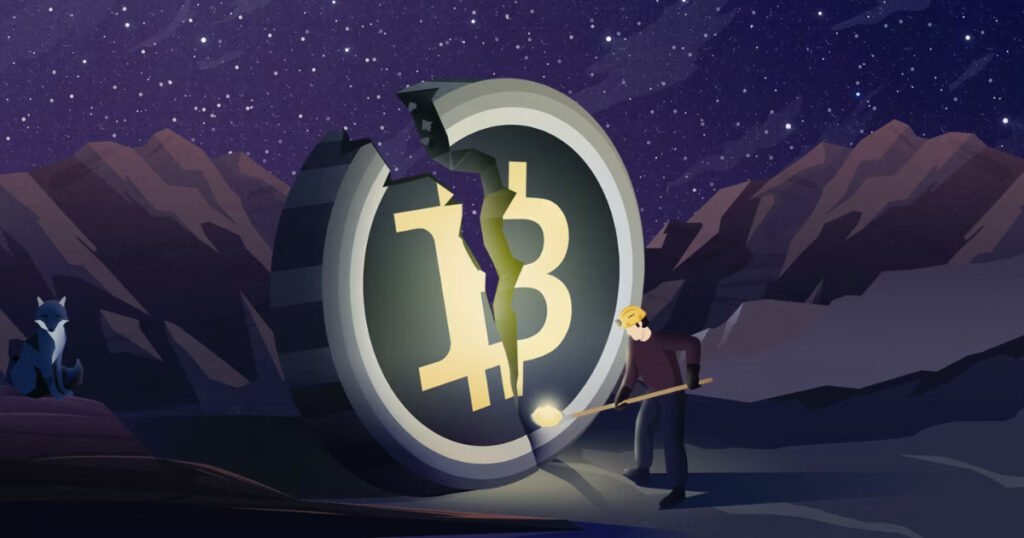On May 11, 2020, Bitcoin underwent a pivotal event etched into its code from the beginning: its third halving, when the reward for mining a new block dropped from 12.5 bitcoins to 6.25 bitcoins. This programmed milestone, occurring every 210,000 blocks—or roughly every four years—cut the rate at which new bitcoins entered circulation, reinforcing the cryptocurrency’s deflationary design. On this day, at block height 630,000, mined at 19:23 UTC by the AntPool mining pool, the halving took effect, slicing the daily issuance of new bitcoins from 1,800 to 900. For the global Bitcoin community, May 11 was a moment of celebration, anticipation, and reflection, as the network’s economic rules shifted once again, right on schedule.
The lead-up to May 11, 2020, was electric with activity. Bitcoin’s price hovered around $8,700, down from a peak above $10,000 earlier that month, as traders and hodlers speculated on what the halving might mean. Miners, the backbone of the network, prepared for a seismic shift in profitability—those with older, less efficient rigs faced the risk of shutting down, while larger operations like AntPool and F2Pool jockeyed to mine the historic block. At 19:23 UTC, AntPool claimed the prize, embedding a message in block 630,000: “NYTimes 09/Apr/2020 With $2.3T Injection, Fed’s Plan Far Exceeds 2008 Rescue.” The nod to a New York Times headline about central bank stimulus during the COVID-19 pandemic echoed Satoshi Nakamoto’s genesis block message, linking Bitcoin’s ethos of scarcity to a world awash in fiat liquidity. Online, the crypto community erupted, with Twitter and Reddit buzzing as users tracked the block countdown in real time.
The halving itself was a technical marvel executed with quiet precision. On May 11, Bitcoin’s decentralized network of over 100,000 nodes worldwide adjusted seamlessly to the new reward structure, a testament to its resilience a decade after launch. The event happened at a time when the world was gripped by the early stages of the pandemic—lockdowns were in force, markets were volatile, and Bitcoin’s narrative as “digital gold” was gaining traction. At 6.25 BTC, the reward was worth about $54,375 at the day’s price, a far cry from the third halving’s predecessors: 2012’s 50-to-25 BTC drop (when BTC was $12) and 2016’s 25-to-12.5 BTC cut (at $650). Miners celebrated with virtual watch parties, while exchanges like Binance and Coinbase hosted live streams, drawing thousands of viewers to witness the block’s confirmation.
For those immersed in Bitcoin on May 11, the day carried a festive air tinged with stakes. Mining pools splashed out on social media—F2Pool, which mined block 629,999 just before the halving, tweeted a playful “last dance” farewell to the 12.5 BTC era. Meanwhile, smaller miners voiced concerns on forums like BitcoinTalk, calculating hash rates and electricity costs to survive the leaner rewards. The halving transaction included 0.298246 BTC in fees, reflecting a busy mempool as users rushed to mark the occasion with on-chain activity. Stories circulated of early adopters who’d mined thousands of coins in 2010, now marveling at how 6.25 BTC had become a coveted prize. On Reddit’s r/Bitcoin, posts ranged from technical breakdowns to memes— “To the moon!” clashed with “Buy the dip!”—capturing the community’s chaotic optimism.
May 11, 2020, wasn’t just a number crunch; it was a milestone in Bitcoin’s journey toward its 21-million-coin cap. On that day, with 18.375 million bitcoins already mined, the halving pushed the network closer to its finite future, where miner revenue would rely solely on fees—an eventuality still decades away. The block reward cut underscored Bitcoin’s contrast to inflationary currencies, a point not lost on enthusiasts amid 2020’s economic turmoil. As the sun set on May 11, the network churned on, its hash rate steady at 121 exahashes per second, proving its durability. The third halving was a quiet triumph of code and consensus, a day when Bitcoin reaffirmed its rules in a world that often seemed to have none.
